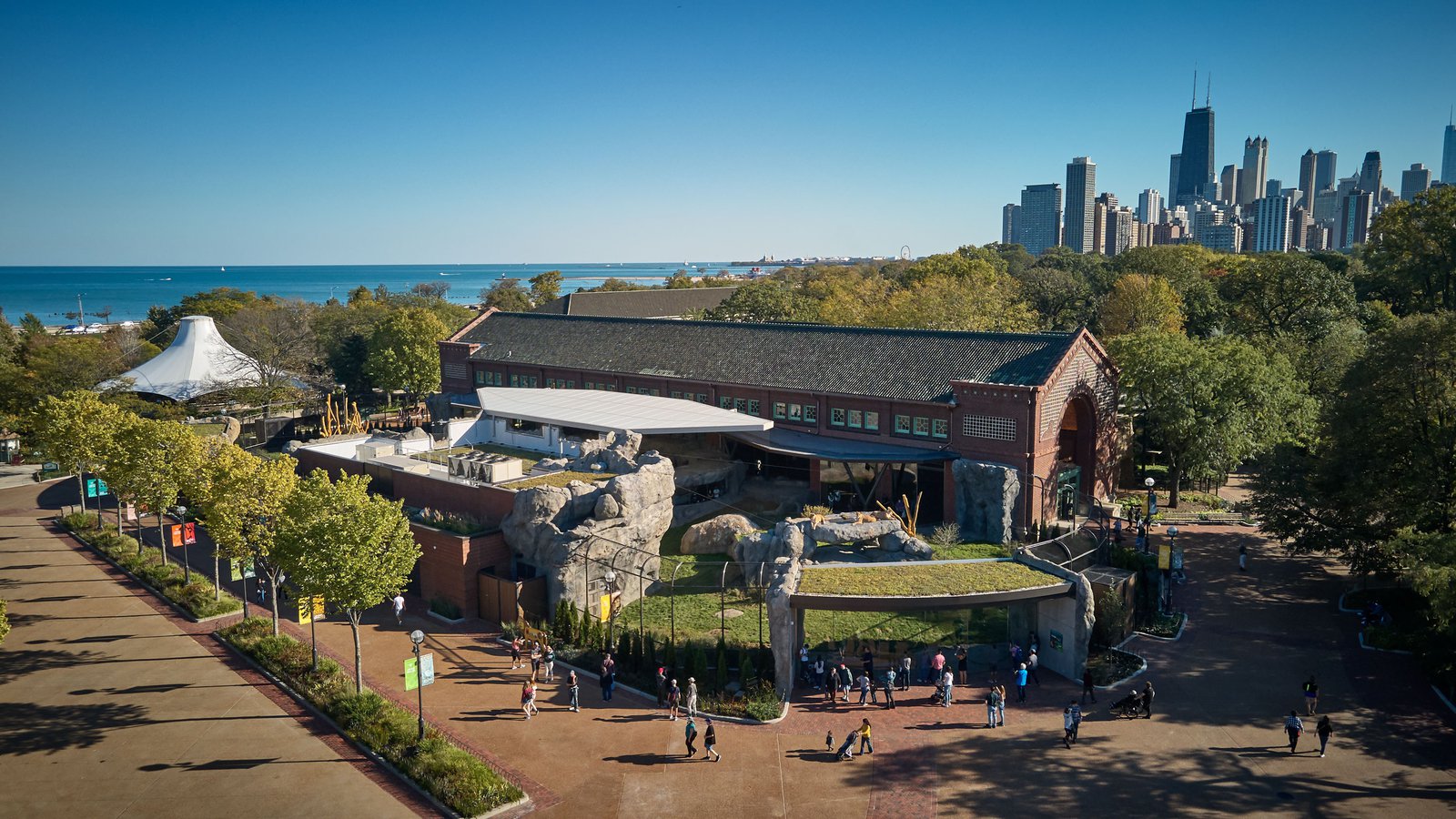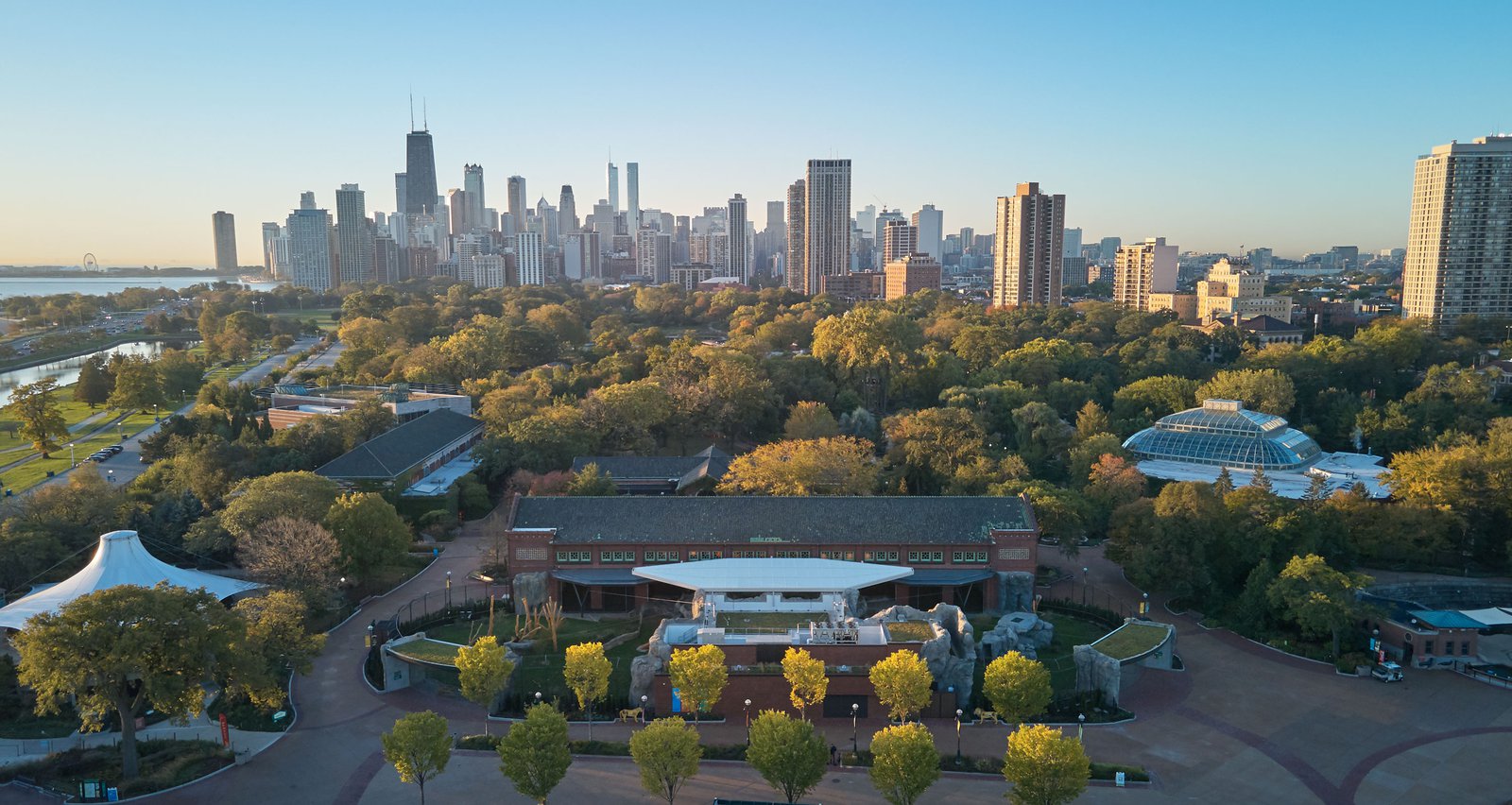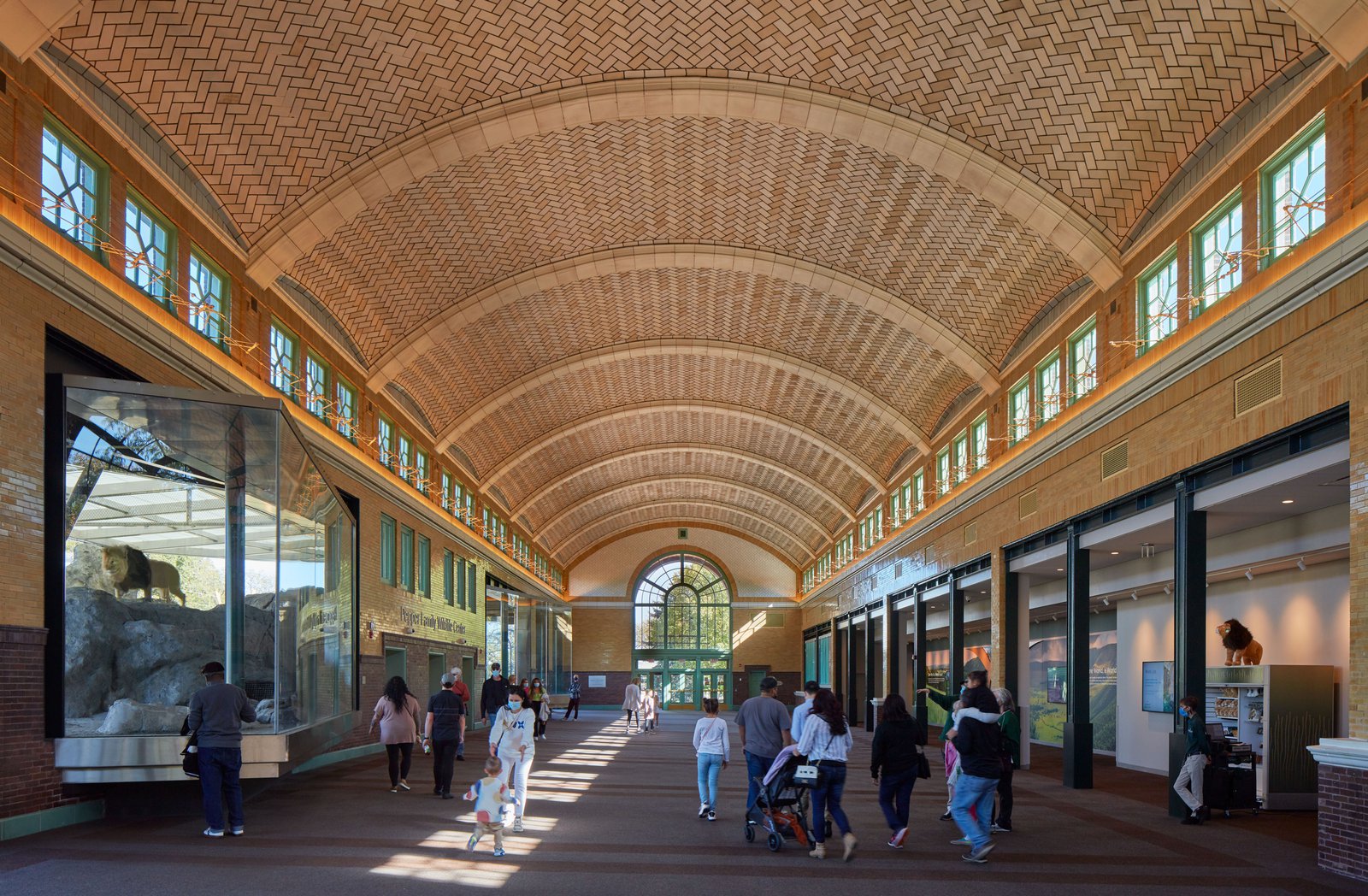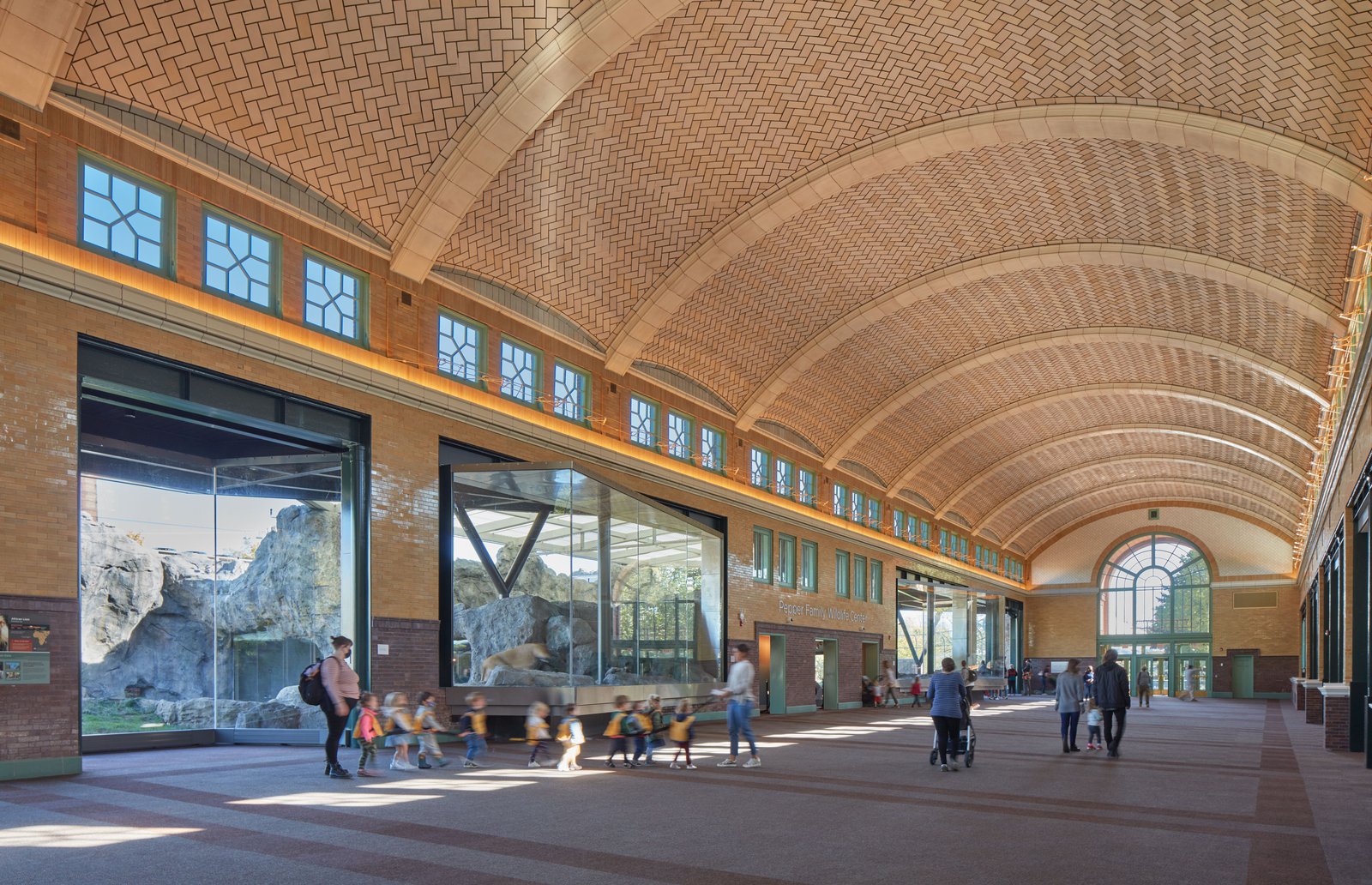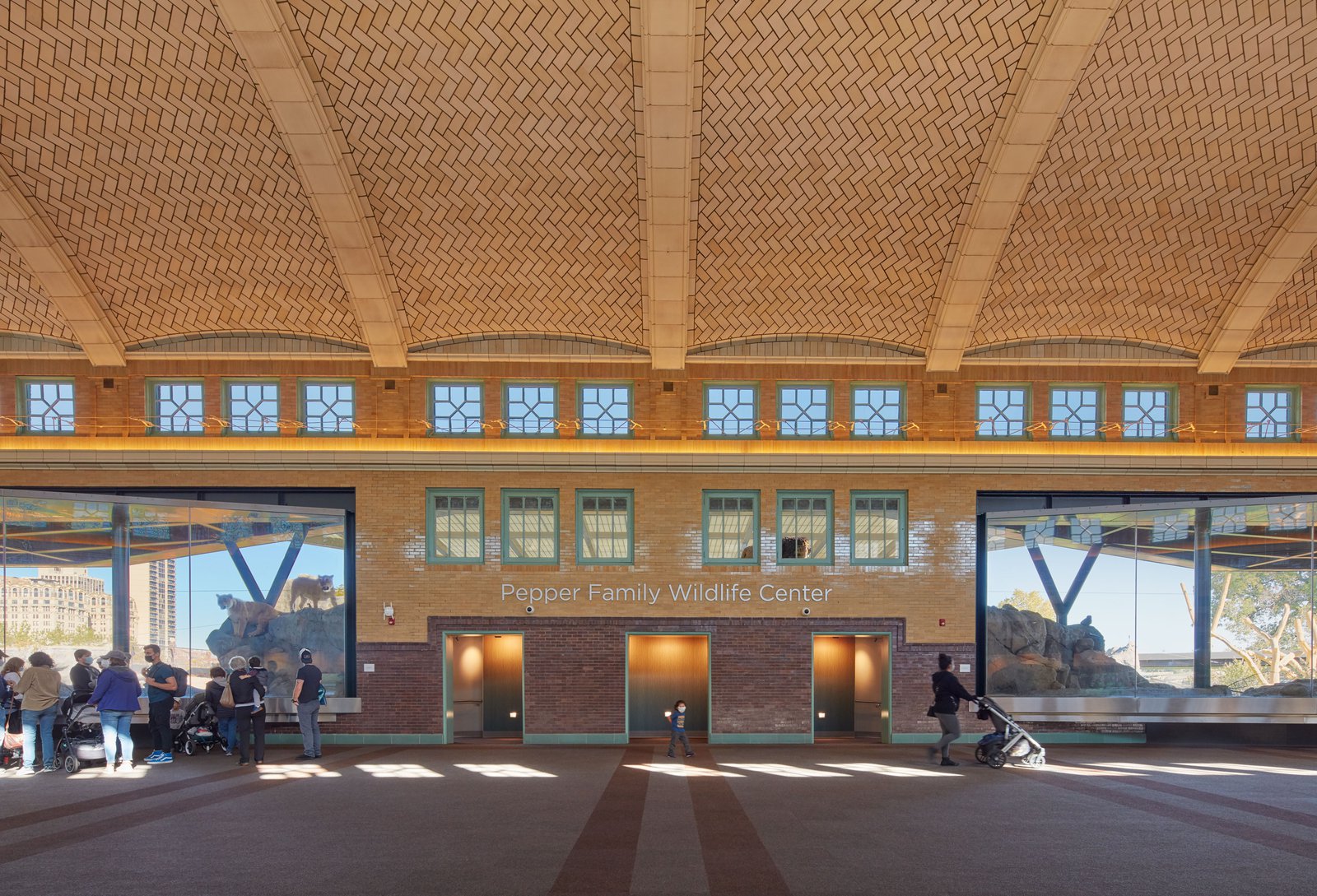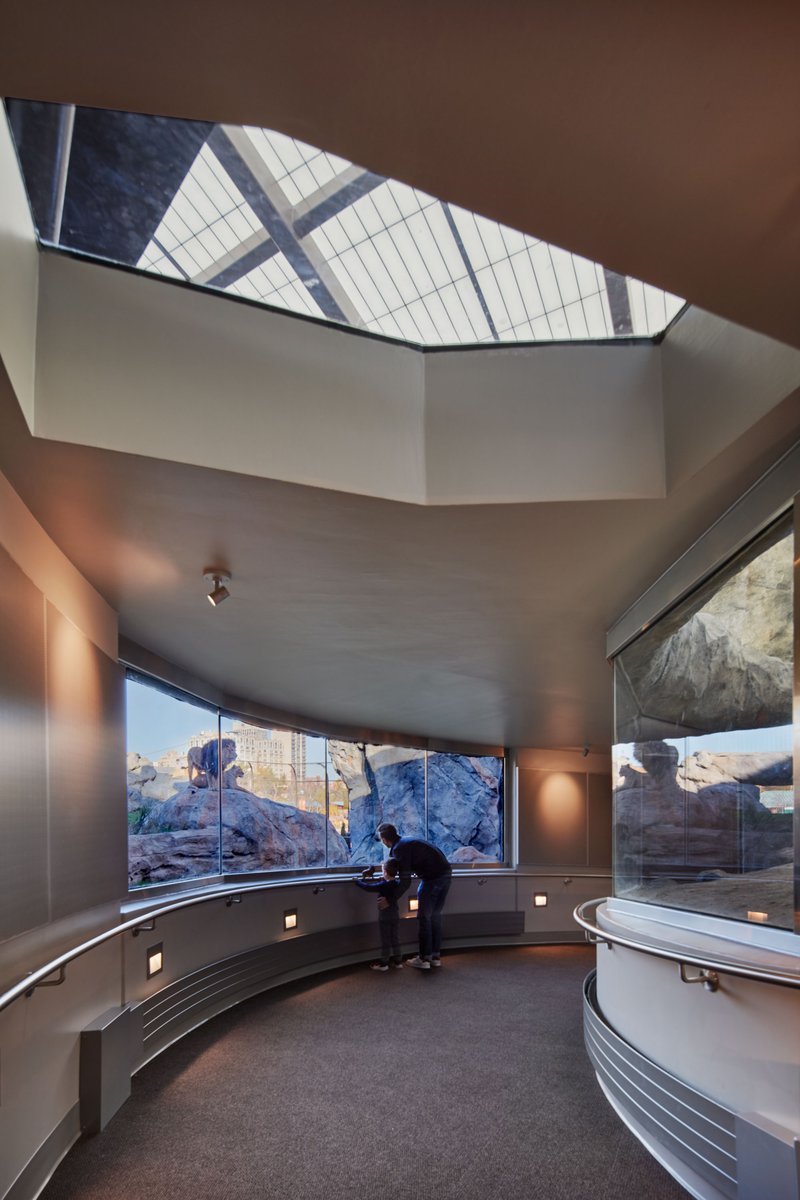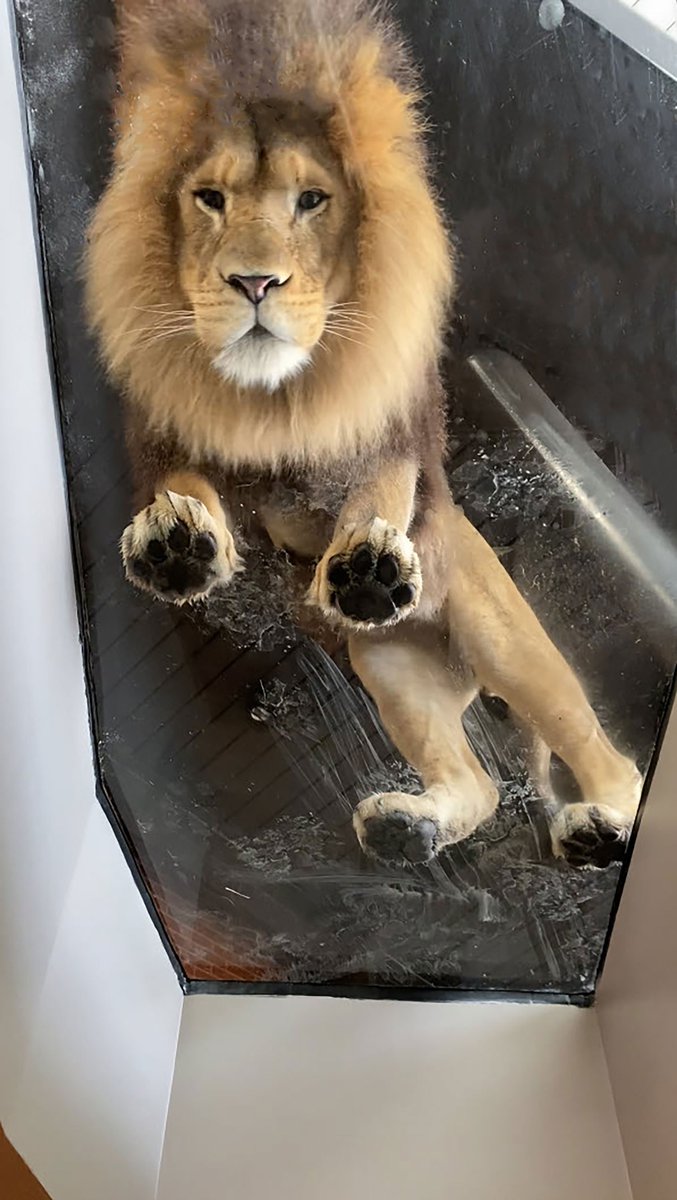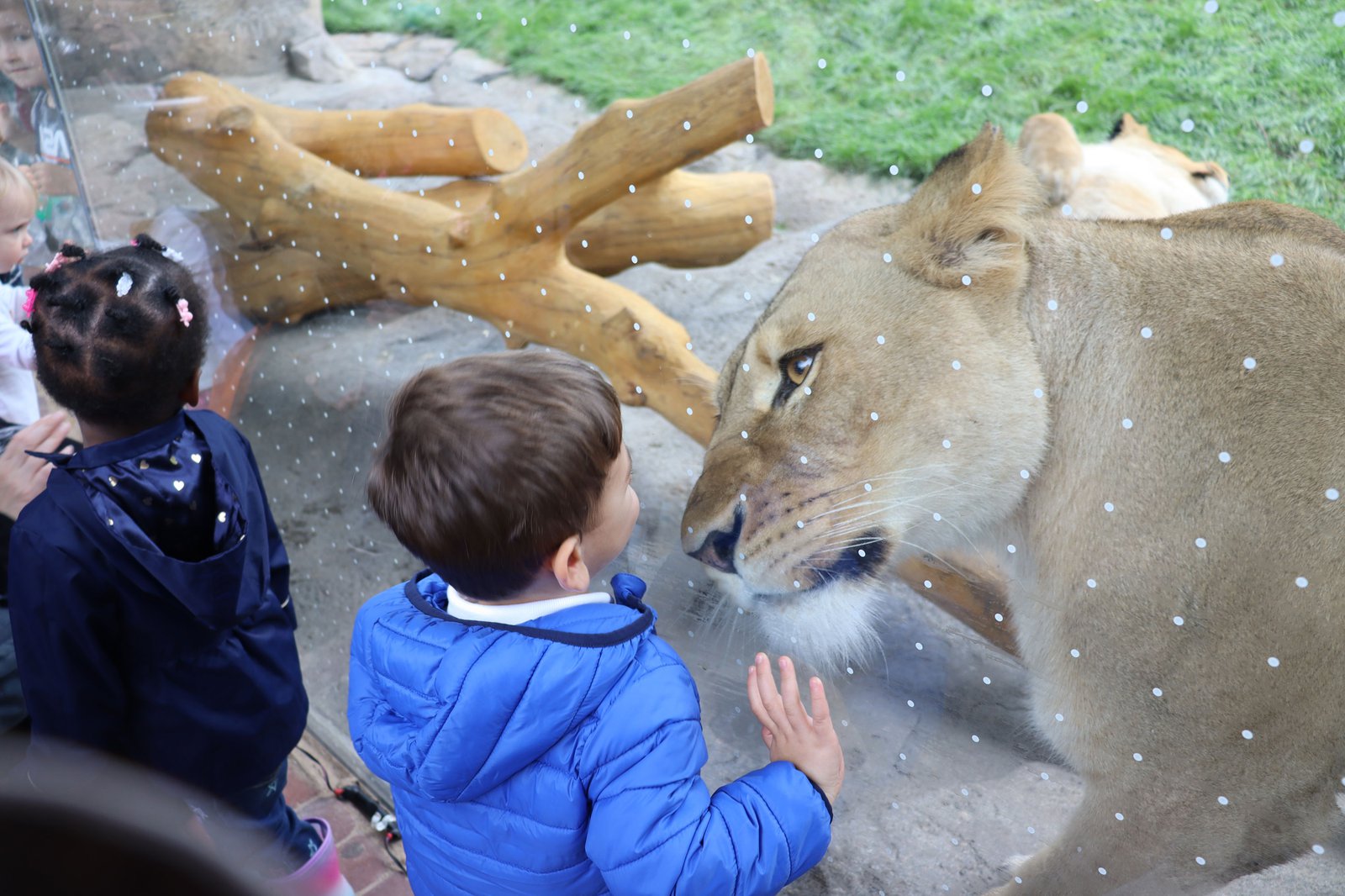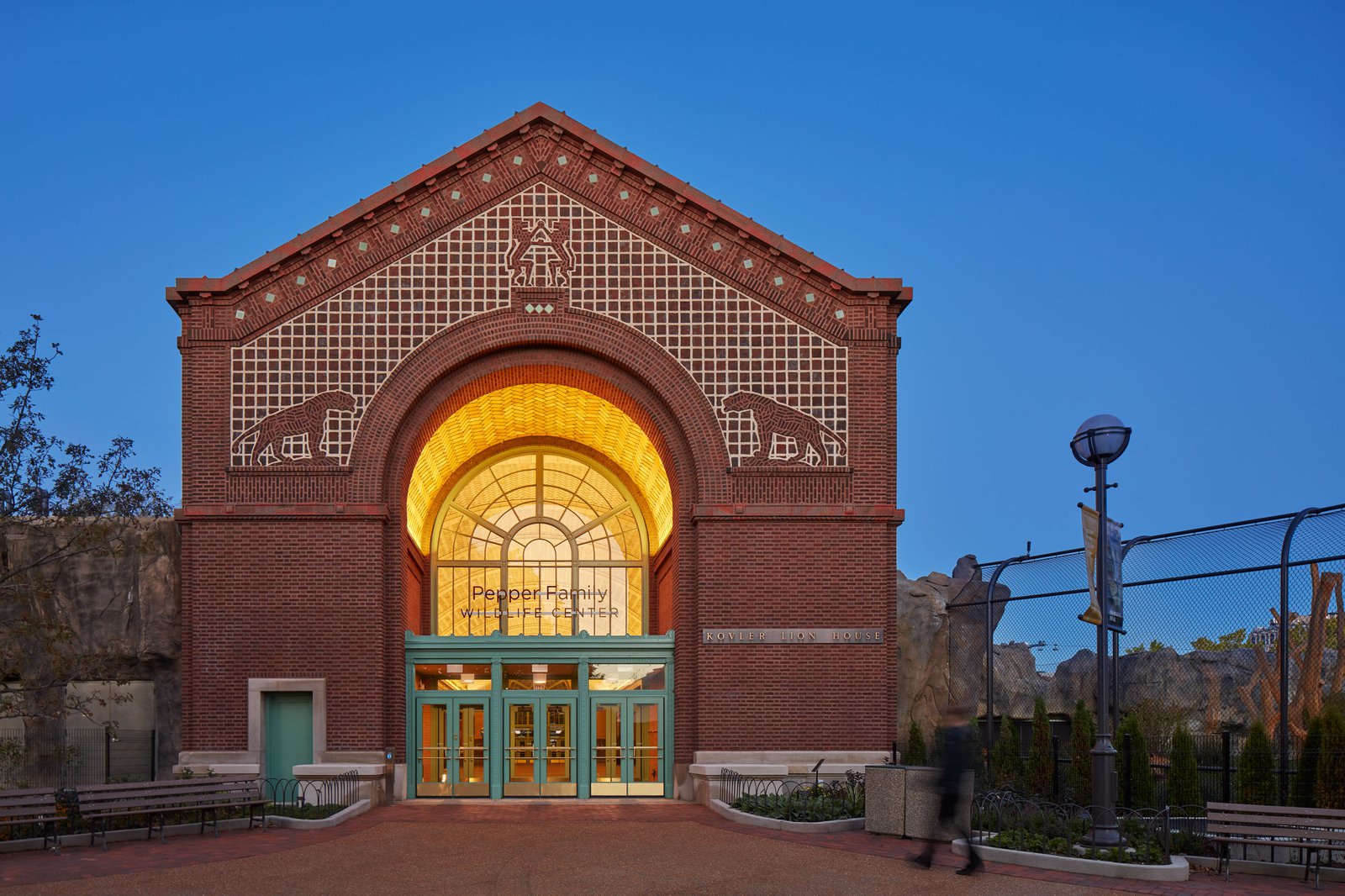Pepper Family Wildlife Center
Chicago, Illinois, USA
Sitting at the heart of Lincoln Park Zoo, the historic lion house was originally designed by architect Dwight Perkins and completed in 1912. With its decorative brickwork and terra-cotta ornament, lion mosaics and grand hall with a vaulted Guastavino tile ceiling, it was designated a Chicago Landmark in 2005. With limited work done since the last significant renovation in 1990, the building was due for improvement. The zoo wanted to substantially improve the lion habitat, with a focus on the animals, as well as the experience for visitors.
Through a complete renovation, restoration and expansion, the 54,000-square-foot state-of-the-art facility nearly doubles the size of the previous lion habitat and provides increased transparency and a more immersive experience for visitors while restoring the architectural integrity of the original landmarked building. Designed in collaboration with Seattle-based zoo exhibit specialists PJA, the habitat focuses on providing choices for the animals and enhanced wellbeing. The facility is home to a pride of eight African lions, as well as Canada lynx, red pandas and snow leopards.
The design team worked closely with the Commission on Chicago Landmarks to preserve, restore and enhance the architecturally significant features of the original Arts and Crafts structure, including the masonry, clay tile roof, and copper gutter, along with windows and doors.
The new lion habitat spans the full northern side of the building, with the design informed by data collected by the zoo over the last several years on lion behavior and space use to understand their preferences. Large 1 ½”-thick glass panels provide expansive views of the outdoor lion space. The savanna-style habitat includes detailed rockwork to introduce climbing features and expand environmental options for the lions while providing embedded heating and cooling elements for climate control. Tree structures and deadfall are made from trees certified by the Forest Stewardship Council, and food ziplines, simulating prey, provide an enrichment opportunity for the lions.
Guests now have immersive, “nose-to-nose” viewing opportunities from both inside and outside the building. The unique design also facilitates viewing from the Lion Loop, a sunken elliptical path leading visitors down from the main hall into the center of the habitat. The loop provides visitors the opportunity to view lions from all around—even through skylights overhead. The project also includes a demonstration training wall where visitors will be able to view the lions working with zoo staff to participate in their own care. The overall educational focus of the building is the zoo’s ongoing conservation efforts in Africa.
